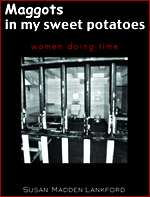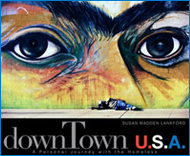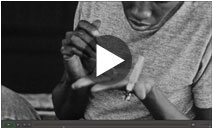 Illinois’ juvenile justice system is failing. Failing to rehabilitate offenders. Failing to help them return to life in their communities. Failing to provide a clearly spelled out release procedure. Failing to provide proper case management. The list goes on. These are not my assertions, they are taken from a state commission’s study slated for release next Tuesday.
Illinois’ juvenile justice system is failing. Failing to rehabilitate offenders. Failing to help them return to life in their communities. Failing to provide a clearly spelled out release procedure. Failing to provide proper case management. The list goes on. These are not my assertions, they are taken from a state commission’s study slated for release next Tuesday.
The proof is in the rate of recidivism. How many youthful offenders return to incarceration for further offenses? More than half, according to the study by the Illinois Juvenile Justice Commission. Additionally the report calls the Illinois juvenile justice system ” in many ways, the ‘feeder system’ to the adult criminal justice system and a cycle of crime, victimization and incarceration.”
Ryan Haggerty of The Chicago Tribune brings us the words of the commission’s chairman:
The commission was ordered by law to develop recommendations to help youth offenders successfully transition back into their communities. The commission’s members found a system that is in desperate need of an overhaul, said its chairman, Judge George W. Timberlake, retired chief judge of the 2nd Judicial Circuit.
‘We actually saw a system that doesn’t work so well, if we gauge the worth of the system in increasing public safety, doing so at the least possible cost and improving the outcomes of kids who otherwise might be part of future criminal activity,’ Timberlake said in a phone interview Monday.
John Kelly, a writer for YouthToday, breaks the report’s findings down into four key areas of criticism:
Release Procedures and the Lack Therof – The commission observed 230 Prisoner Review Board (PRB) hearings, the only way to be released in Illinois short of serving a full sentence. Their conclusions were that the proceedings that were “rushed” and confusing to offenders. Timberlake said that the release process needs to be clearly defined and advised mandated review hearings every six months coupled with the addition of a legal advocate to each facility.
Reentry Practices – The DJJ still uses Department of Corrections standard for adult parole, something at highly at odds with good juvenile reentry practices.
Excessive Parole Revocation – 54% of juveniles who had their parole revoked were returned to incarceration for a technicality. The most frequent reasons being curfew violation, truancy or for home disturbances.
‘We are not suggesting future crimes should not lead to re-incarceration,’ Timberlake said, ‘but it was surprising to find that what could be considered normal teen behavior leads to a return to prison.’
Poor and Archaic Case Management – paper-only master files on juveniles are only the beginning. From several of the terms Timberlake used, “coal-fired computer” and “mainframe that is not susceptible to much upgrade,” leave little doubt as to the currency of their approach. An approach I might add that they share with the Department of Corrections, so it is not only primitive but also geared towards adults not juveniles.
I highly advise Mr. Kelly’s article for further reading as he examines each of these in more detail and also provides some very informative and even handed commentary. [Illinois Probe Finds Rushed, Unmeasured Process for Juvenile Release, Reentry and Parole on YouthToday]
Image Source: derekskey on Flickr. used under it’s Creative Commons license


















